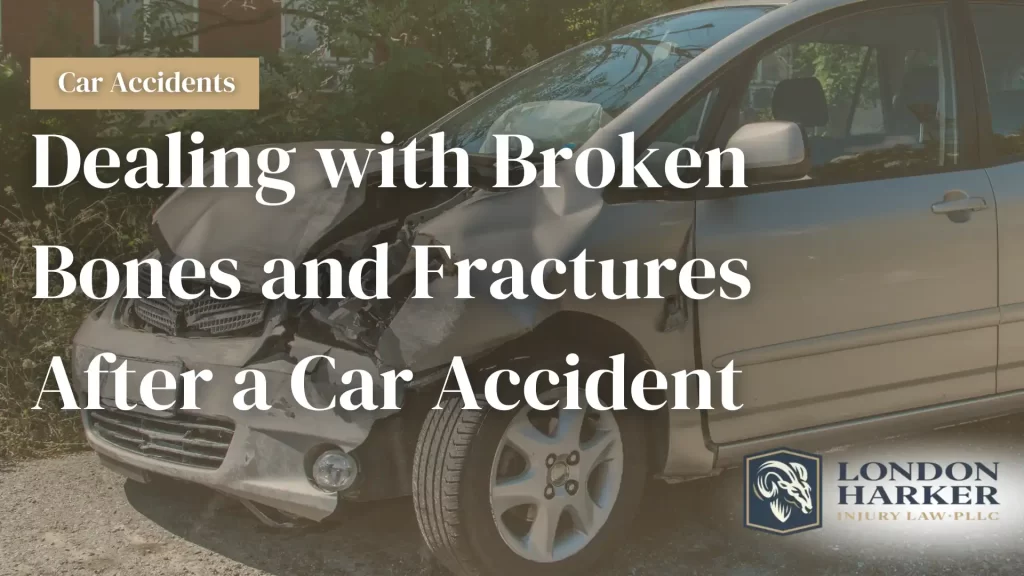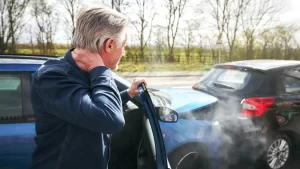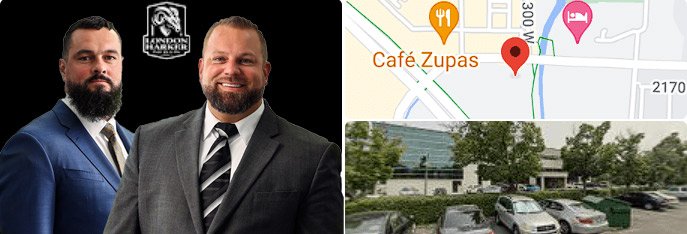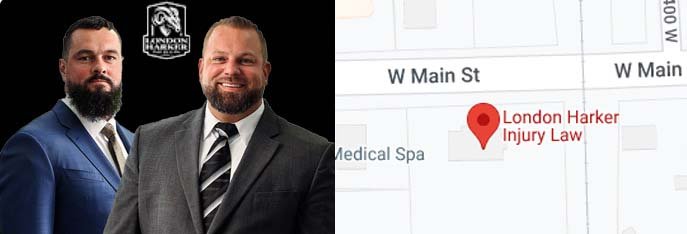Posted on Monday, March 18th, 2024 at 9:00 am

Car accidents inflict a spectrum of injuries, ranging from minor scrapes to debilitating, life-altering conditions. Among the most common serious injuries claimed are broken bones and fractures in car accidents. These injuries can lead to significant pain, extended recovery times, and substantial medical expenses.
Most Common Bones Broken in Car Accidents
While any bone can fracture under the force of a collision, certain car accident fractures are present with higher frequency. The most often broken bones in car accidents and injuries include:
- Femurs: The femur, or thighbone, is the longest and strongest bone in the body. However, the force of a car accident can cause the femur to break, particularly in head-on collisions or when the leg becomes trapped under the dashboard.
- Hips: The hip joint is particularly vulnerable in car accidents, especially among older people. A broken hip or hip fractures can severely limit mobility and may require surgery and extensive rehabilitation.
- Wrists: When bracing for impact during a collision, many people extend their arms and hands, leading to wrist fractures upon impact with the steering wheel, dashboard, or airbag.
- Ribs: The force of a collision can cause rib fractures when the chest strikes the steering wheel or when the seatbelt tightens across the chest. These fractures can be particularly painful and may lead to complications such as punctured lungs.
- Vertebrae: Car accident impact can compress spinal vertebrae, leading to spinal fractures. These fractures range in severity and may cause chronic pain, limit mobility, or even result in paralysis.
Understanding the Types of Fractures
Fractures are classified into several categories based on the nature and severity of the break. Some common types of fractures include:
- Stable Fractures: When the broken bone fragments remain relatively aligned with minimal displacement, the fracture is classified as “stable.” Stable fractures generally heal well with conservative treatment methods such as casting or bracing, promoting immobilization and proper bone healing.
- Displaced Fractures: In displaced fractures, the broken bone fragments are significantly misaligned. These fractures often require surgical intervention to achieve proper realignment. Surgeons may utilize various internal fixation devices like screws, pins, or plates to stabilize the bone fragments and promote optimal healing.
- Comminuted Fractures: Comminuted fractures are the most complex, characterized by the bone shattering into multiple fragments (typically three or more). These fractures pose a greater treatment challenge due to the extensive damage. They may require multiple surgical procedures to reconstruct the bone and achieve proper alignment. Additionally, extensive physical therapy is often necessary to restore function and mobility following healing.
- Open Fractures (Compound Fractures): Open fractures, also known as compound fractures, present a serious medical situation. In these fractures, the broken bone fragments protrude through the skin and soft tissues, creating a direct pathway for potential infection. Open fractures require immediate medical attention and surgery to clean the wound thoroughly, address any contamination, and realign the bone fragments. Due to the increased risk of infection, open fractures often necessitate a long recovery period and intensive rehabilitation.
Treating Broken Bones and Fractures
The course of treatment for a broken bone or a fracture hinges on the specific type and severity of the injury. Common treatment options include:
- Immobilization: For stable fractures, a cast, brace, or splint may be used to hold the bone pieces in place and allow them to heal properly.
- Surgery: Displaced, comminuted, and open fractures often require surgery to align the fractured bone and secure it with pins, screws, or plates.
- Pain management: Pain control is an essential part of fracture treatment. Doctors may prescribe pain medications, recommend over-the-counter pain relievers, or suggest alternative therapies such as ice and heat application.
- Physical therapy: After the initial healing phase, physical therapy can play a crucial role in restoring strength, flexibility, and range of motion to the affected area. A tailored rehabilitation program can help patients regain function, speed up the healing process, and return to their daily activities.
The Impact of Broken Bones on Personal Injury Claims
When broken bones or fractures occur due to a car crash caused by someone else’s negligence, victims may be entitled to compensation for their injuries and losses. The value of a personal injury claim involving a broken bone depends on several factors, including:
- The severity of the fracture
- The length of the recovery process
- The need for surgery or ongoing medical treatment
- The impact on the victim’s ability to work and perform daily activities
- The presence of any permanent disability or disfigurement
Securing fair compensation requires collaboration with an accomplished personal injury attorney. These legal professionals possess the knowledge and experience to gather and analyze critical evidence, skillfully negotiate with insurance companies, and tenaciously advocate for the compensation you rightfully deserve in court. A skilled attorney will evaluate all facets of your case, including past, present, and future medical expenses, lost wages, pain and suffering, and any potential long-term ramifications associated with your injury. They can also help in facilitating average settlement for broken bones in car accidents.
Preventing Broken Bones in Car Accidents
 While not all car accidents are avoidable, there are steps you can take to reduce the risk of broken bones and other serious injuries that occur:
While not all car accidents are avoidable, there are steps you can take to reduce the risk of broken bones and other serious injuries that occur:
- Always wear your seatbelt: Seatbelts are one of the most effective ways to prevent serious injuries in car accidents.
- Adjust your headrest: Properly adjusting your headrest can help prevent neck and spine injuries in the event of a collision.
- Maintain a safe distance: Following too closely behind other vehicles increases the risk of a rear-end collision.
- Avoid distractions: Distracted driving, such as texting or eating behind the wheel, significantly increases the risk of accidents.
- Keep your vehicle well-maintained: Regular vehicle maintenance can help you avoid accidents and minimize the severity of injuries if a collision does take place.
Seeking Legal Guidance After a Car Accident
If you or a loved one suffered broken bones and fractures in a motor vehicle accident caused by another party’s negligence, London Harker Injury Law‘s team of accomplished Sandy car accident attorneys and Provo car accident attorneys stands ready to assist you. Our team recognizes the profound physical, emotional, and financial hardships associated with such injuries. Rest assured, we are firmly committed to securing the just compensation you deserve despite your medical conditions.
Don’t face the aftermath of a car accident alone. Contact London Harker Injury Law today online or at 77CARCRASH for a free, no-obligation consultation with one of our experienced personal injury attorneys. We are here to answer your questions, discuss your legal options, and help you pursue the justice and compensation you deserve.



